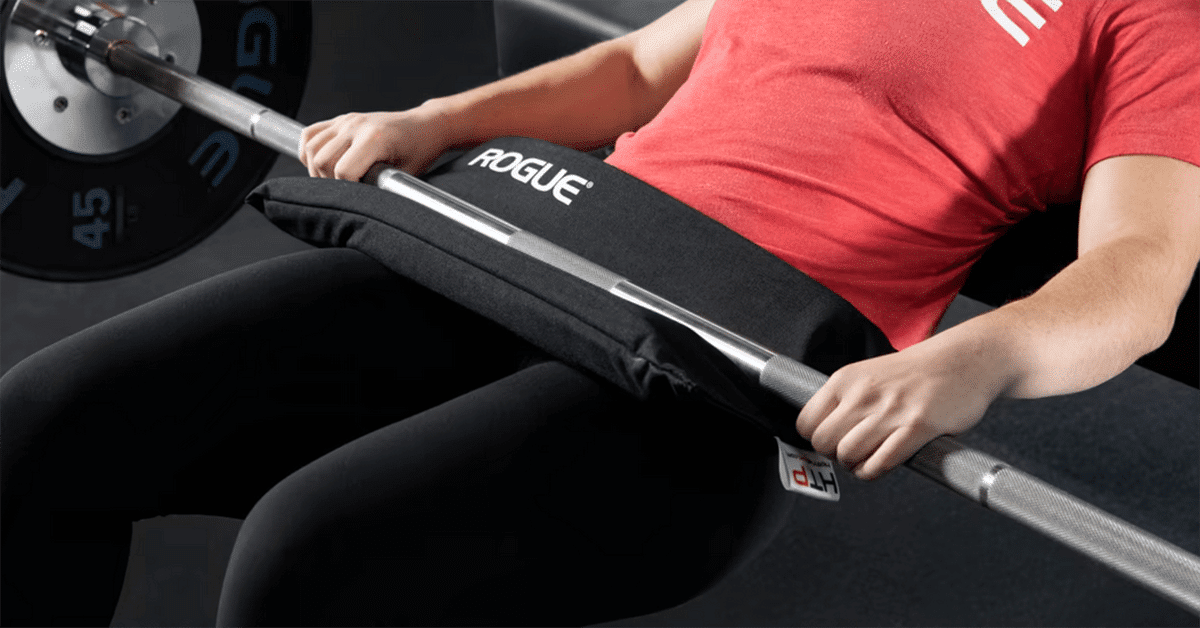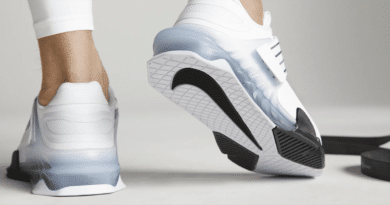What is the Best Hip Thrust Pad to Buy?
This guide to the Hip Thrust Pad will show you why you need one, how to use it safely and why the Hip Thrust is such an effective exercise.
We have included our selection of choice that we use in our training sessions.
Benefits of the Hip Thrust Movement
- Improved posture and reduced pain
- Enhanced bone density
- Better Glutes
- Elevated Mobility
Best Hip Thrust Pad
The AbMat Hip Thrust Pad is specifically designed to address the unique safety and stability requirements of the hip thrust movement.
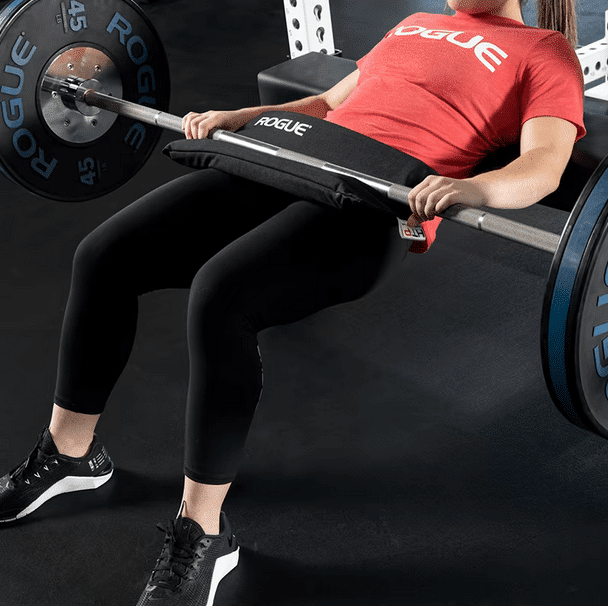
If you’ve been using makeshift solutions like rolled mats or neck pads for this purpose up to now, it’s high time to upgrade.
Manufactured in the USA and available here with exclusive Rogue branding, this patent-pending design features multi-layered well technology that creates a more even distribution of the bar’s weight and better protects the pelvis in the process.
The flexibility of the foam pad also results in a more comfortable hinge and thrust for the user and greater overall stability, as the pad snugly pinches the bar between the hip and thigh through each rep.
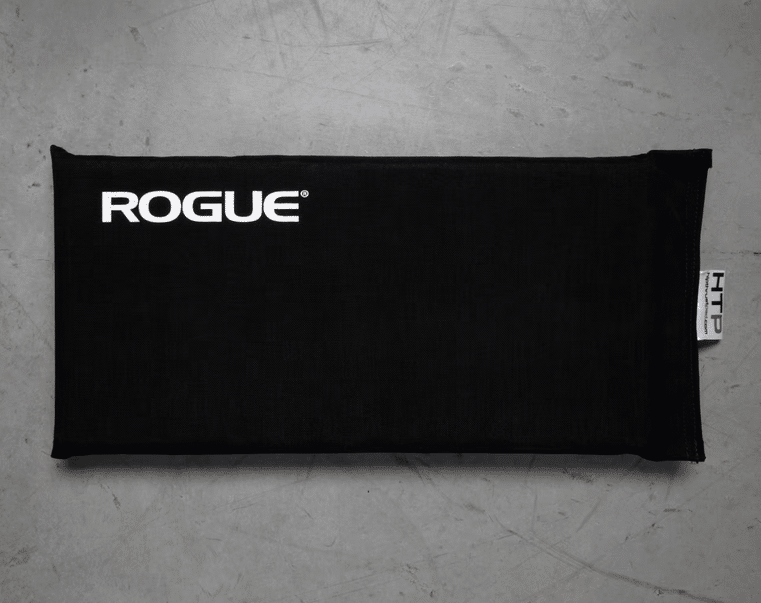
Each AbMat Hip Thrust Pad measures 18″ x 9″ x 1.75″ and includes a black Cordura outer to protect the padding on both sides.
The top of the pad has a harder surface to take the bulk of the pressure and weight of the bar, while the bottom side has considerably more give and softness for the athlete’s comfort.
Hip Thrust Pad Specifications
- Made in the USA
- Patent-pending pad designed specifically for hip thrusts
- Dimensions: 18″ x 9″ x 1.75″
- Cordura outer
- Multi-Layer Well Tech distributes even weight load and protects hips/pelvis
- Harder top side to absorb pressure, soft padded foam underside for comfort
- Ensures stability by pinching bar between hip and thigh during movement
- Colour: Black with exclusive Rogue branding in White
Should I Use a Pad for the Hip Thrust?
Yes, you will need to use a Pad to protect your body from bruising, grazing, pinching, pain and the pressure of the barbell and weigh against your hips.
How do you use a Hip Thrust Pad?
What Weight Should I Start Hip Thrusting?
If you are new to the exercise, start light and build up slowly to a weight that you can comfortably lift for 3 sets of 12 reps.
Keep raising the weight until you can perform 20 reps in a single set with your bodyweight. That is a good milestone to reach.
Once you are at that point you will have a base of strength, confidence and understanding of the movement.
Beyond that, keep raising the weights. Remember to program for your specific goals.
- Muscle Growth and Toning: 3 – 5 sets of 8 – 12 reps. Rest for 30 – 45 seconds between sets.
- Strength: 3 – 5 sets of 3 – 6 reps. Rest as needed between sets.
Can Hip Thrusts cause Pelvic Pain?
If your glutes are weak and you use too much weight for the exercise (more than your body can handle), then the movement can pull the pelvis into an unnatural position.
This is called anterior pelvic tilt, also known as hollow back. It can cause postural problems and pain.
Lift in a controlled manner, build up the loads gradually and use a Pad and you will be able to avoid pelvic pain.
How do you Activate Glutes in Hip Thrust?
Are Hip Thrusts Better than Squats?
Hip Thrusts are better at hitting the upper fibres of the glutes
Squats are better for full body strength, muscle mass and conditioning
The best idea is to combine them together in the same workout and maximise your gains by getting the best of both worlds.
Should I do Hip Thrusts First?
No, you should do your heavy Squats or Deadlifts first then follow them up with the exercise afterwards.
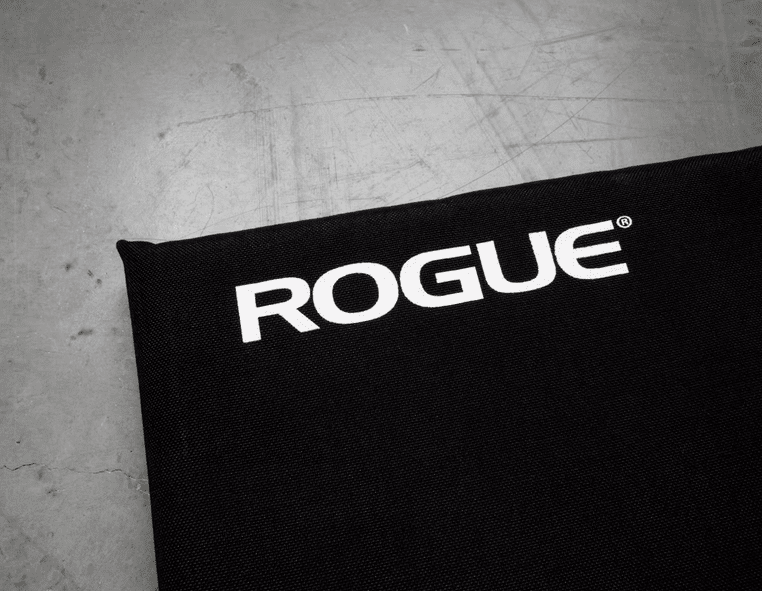
If you want to learn more about the right equipment for you, check out these Gymnastic Rings or Squat Safety Bars.

